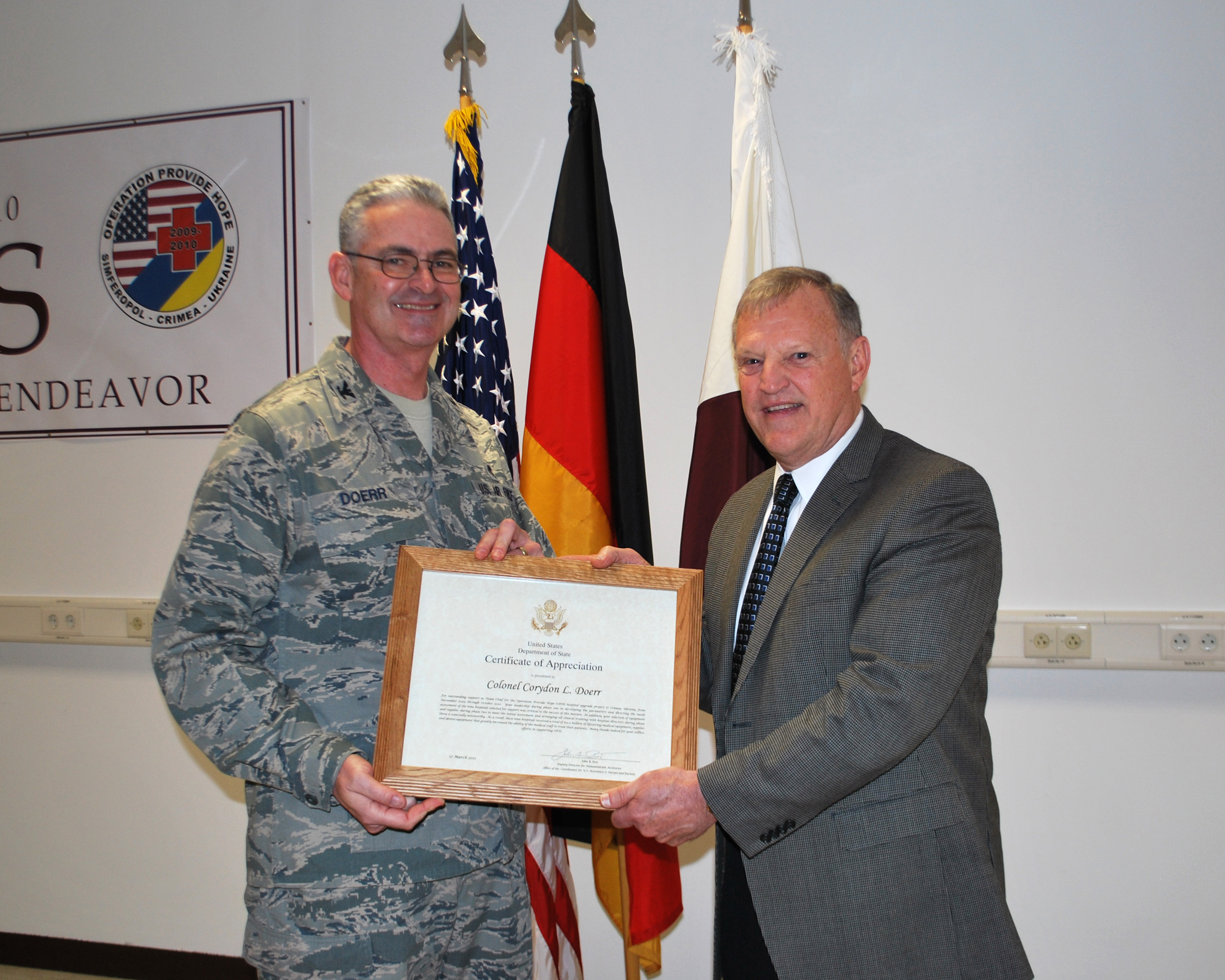USAMMCE Hosts Recognition Ceremony for Operation Provide Hope

The U.S. Army Medical Materiel Center, Europe hosted a ceremony on March 17, recognizing team members of the U.S. Department of State's recently completed Operation Provide Hope mission to Simferopol, the capital of Crimea in southern Ukraine.
The mission lasted from October 2009 to October 2010 and was the first mission deployed to this part of the Ukraine. It consisted of 96 13-meter trucks packed with equipment worth $22.5 million for seven major medical hospitals and two large dental clinics, one of which is a teaching clinic.
John Post, the Deputy Director for Humanitarian Assistance, Office of the Coordinator for U.S. Assistance to Europe and Eurasia; Col. William M. Stubbs, the USAMMCE Commander; and Louis DeAndrade, the Chief of the Humanitarian Assistance Program (HAP) presented certificates to team members from the Air Force and USAMMCE.
According to Post, the best part of his job is seeing the smiles of the hospital staff when they receive their equipment after doing without for many years. Post went on to say that it's also a good training opportunity for the troops, as they are faced with situations they wouldn't otherwise experience at their home station.
Team Chief Col. Corydon Doerr, Deputy Commander for the 86th Dental Squadron on Ramstein Air Base in Germany, said, "It was a tough mission, but those tough days make you stronger." He also said the mission would not have been possible without the dedicated workers in the USAMMCE HAP warehouse, who ensured everything was packed and ready for shipment on time.
DeAndrade thanked his employees and the Air Force team for a successful mission, as did Stubbs. DeAndrade explained that each mission consists of three parts: preparing, packing, unpacking and training. He further explained they film the training for the hospital staff, so they can use it to train other staff members.
Operation Provide Hope was established by the U.S. Department of State in 1992, under the Freedom of Support Act, and uses medical excess from closing military hospitals and clinics around the world to support the newly established countries of the Former Soviet Union.














